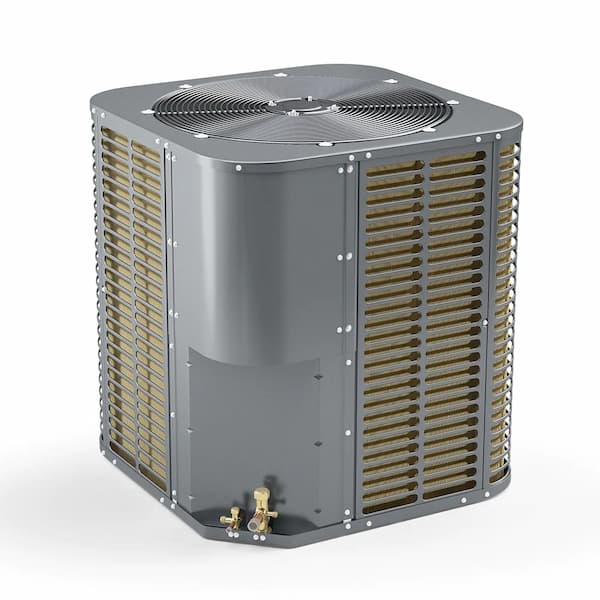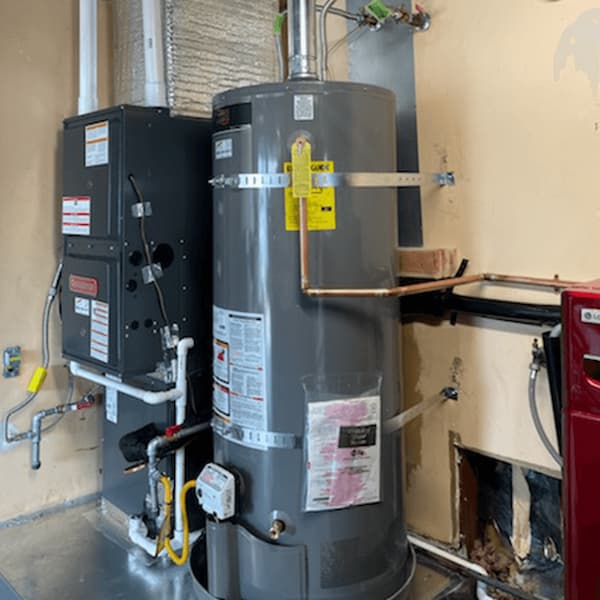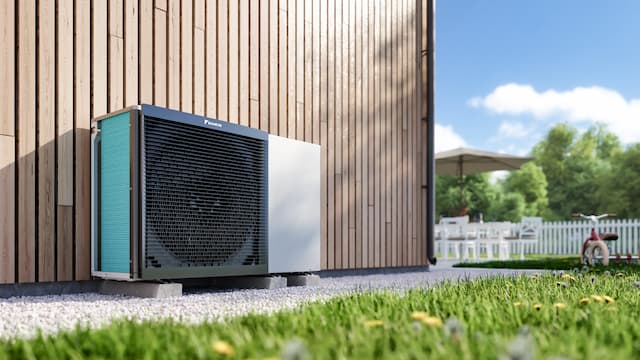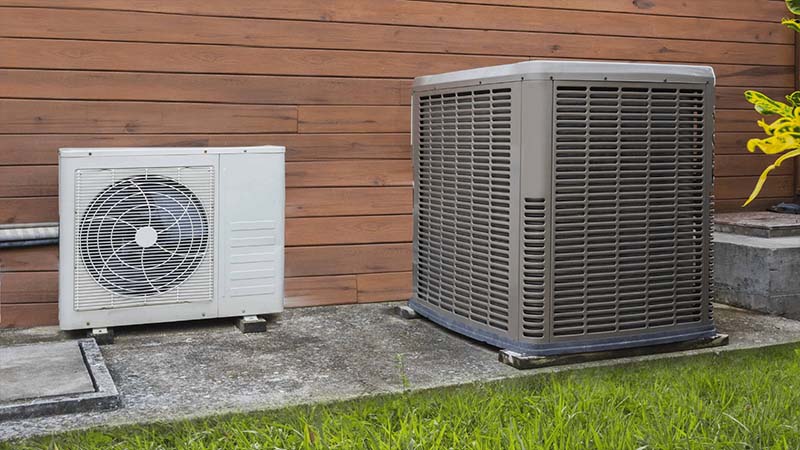A lot of people tend to use the terms “forced air” and “central air” interchangeably, but they’re actually two different things. The central air vs forced air is discussed in this article.
Most of the time, forced air is used to describe the heating system while central air is used to describe the cooling system. However, occasionally the two terms are used synonymously.
In a central heating system, heat is generated in one place and then distributed throughout the entire house. A forced-air system, on the other hand, is any HVAC system that circulates temperature-controlled air into your home or structure using air ducts and vents.
If a furnace or heat pump uses ducts, it is only referred to as forced air. To deliver conditioned air, central air conditioners use the forced air heating system’s distribution system.
What is Central Air, and How Does It Work?
A central air system uses a closed circuit of refrigerated air to keep a house cool and comfortable. In most central air conditioning systems, indoor and outdoor units cooperate. Central air cools a home through the following process:
- Warm air is drawn from the residence through a vent and directed over the evaporator coils. By absorbing the heat, the evaporator coils return cold air through the ductwork.
- Once the heat has been absorbed, the refrigerant transforms from a liquid state to a gaseous state and moves toward the compressor. The gas’s temperature and pressure rise as a result of the compressor’s reduction in volume.
- The gas travels to the outdoor unit’s condenser, where it releases heat into the atmosphere. The gas turns back into a liquid as a result of this temperature change.
- The process is repeated after the refrigerant has cooled down.

Central Air: Pros and Cons
It is very efficient and effective to use central air. The system can function for a long time with little maintenance needed because of them. Additionally, central air conditioning systems can maintain a constant temperature throughout the entire house all year long and run much more quietly than other forced air systems.
Another advantage of central air systems is their ability to improve air quality by removing humidity, allergens, airborne particles, and dangerous gases. As a result, your home will be cleaner and your family will be able to breathe easier.
Unfortunately, installing central air conditioning systems can be more expensive. The price can differ based on the type of system and whether your house already has the necessary ductwork and furnace for the air system to function properly. Furthermore, since mold and bacteria can accumulate in ducts and vents, maintenance may be necessary. A professional cleaning of your central air conditioning system should be done at least once a year if you have one.
Even though a central air system might result in a higher energy bill, you can avoid having to pay exorbitant amounts by keeping your air conditioning set above 72 degrees and maintaining it properly.
What is Forced Air, and How Does a Forced-air System Work?
Often, you’ll see industry professionals using the term “forced air” when referring to air heating systems. It’s not quite that straightforward, even though this might be a proper use of the phrase. In actuality, any HVAC system that distributes temperature-controlled air into a home through vents and air ducts is a forced-air system.
HVAC specialists who only refer to a furnace or heat pump when they use this term are likely thinking of those appliances.
How Does a Furnace Work?

Furnaces can be operated in a similar manner using gas, oil, or electricity. Furnaces heat houses through the following process:
- The furnace produces heat using propane, oil, natural gas, or electricity.
- A heat exchanger processes this heat.
- The heat exchanger warms the air as it travels through the ductwork in the house.
- The furnace’s blower then drives air through the ductwork to heat the house.
Because furnaces use a blower to distribute heated air throughout a home’s rooms, the majority of people refer to them as forced-air furnaces.
How Does a Heat Pump Work?

The heat pump operates like an air conditioner but differs in that it heats and cools. It removes heat from the house during warm months and releases it outdoors. It pulls heat from the outside air and transfers it to the interior of the house during the colder months.
Heat pumps produce warmth in a house through the following steps:
- Heat is brought into the heat exchanger by the evaporator from the outside of the building. A variety of heat pumps will extract heat from the earth, the air, or a nearby water source.
- The refrigerant evaporates when heat comes into contact with it. Refrigerant that has evaporated is directed to the compressor, where fluid compression amplifies heat.
- The condenser is where the refrigerant fluid goes after it transforms into a gas and then back into a liquid. The condenser, a secondary heat exchanger, enables heat to be absorbed by water from the central heating system.
- The system then distributes the heat throughout the house.
Some heat pumps warm a home by running heated water through radiators or pipes tucked beneath the floorboards. Other heat pumps use motorized blowers to send hot air into the ductwork.
Check for How Long Do Heat Pumps Last?
Forced Air: Pros and Cons
Forced air systems have many benefits, one of which is the ability to produce filtered and dehumidified air, making your home more comfortable. Additionally easily upgradeable and low maintenance, forced air filtration is a feature of these systems. Lower energy costs will allow you to heat or cool your entire house. Even though they are compatible with programmable and smart thermostats, forced air systems increase the value of your house.
For example, forced air systems are more expensive and noisier, which are drawbacks. Costs associated with forced air systems are higher, particularly when a central air conditioner is added.
The ductwork and vents in your home require some maintenance as well. Every few years, ducts need to be sealed and cleaned to prevent the buildup of dirt, mildew, and mold. You run the risk of introducing dust and other allergens into your home if you don’t perform routine maintenance and change the filters.
An expert installer is also required for forced air systems. Fortunately, Cates offers a wide range of HVAC service plans so that the process is affordable and simple for you.
Which Should You Choose? – Central Air Vs Forced Air
In a forced air system, the air is filtered, and the filtration can be easily upgraded. For effectively cooling the entire house, choose this option. It is perfect for areas with high humidity levels because it naturally dehumidifies the air as well. It doesn’t require as much maintenance, so you don’t need to worry about it being overly maintained. When used properly, it can lower your energy costs while maintaining the comfort of your home.
You might still need to use central air conditioning if your house already has a ductwork system. High-efficiency units are widely available right now. All you need to do is make sure a qualified technician installs your new HVAC system.
What’s the Difference? – Central Air Vs Forced Air
The main distinction between central air conditioning and forced air systems is therefore that the latter specifically refers to a cooling system. A central air conditioning system uses the forced-air system within your home to deliver cooled air, making use of the vents, plenums, and ducts to provide conditioned air.
Using an outdoor unit that is not at all connected to the furnace, the central air conditioning system is separate from your furnace. However, it essentially takes the delivery system from another system to distribute cool air throughout your house.
Because the distinction between the two terms is so slight, they frequently get mixed up. A lot of people, even contractors, in fact) use the two terms somewhat interchangeably.



